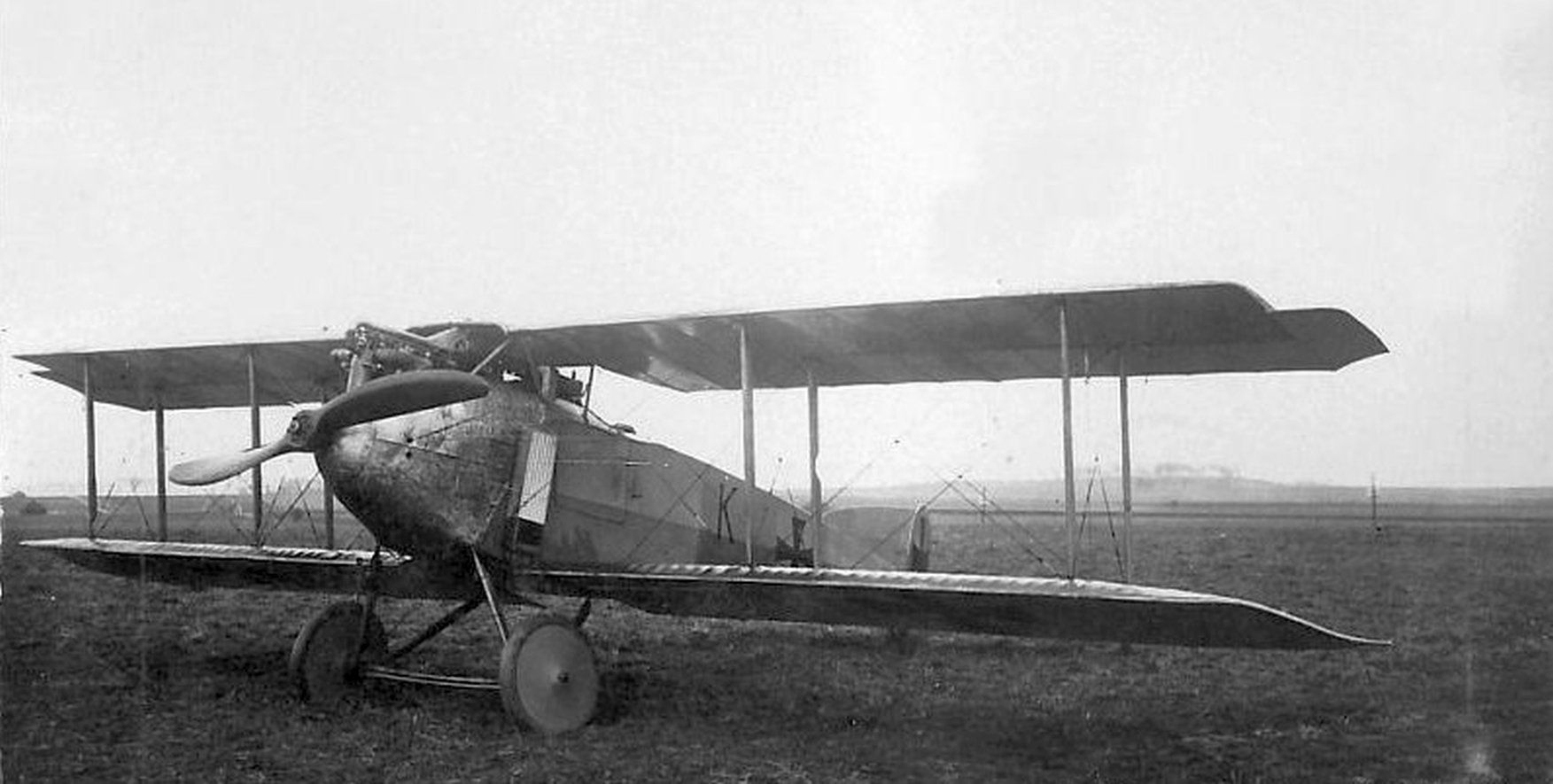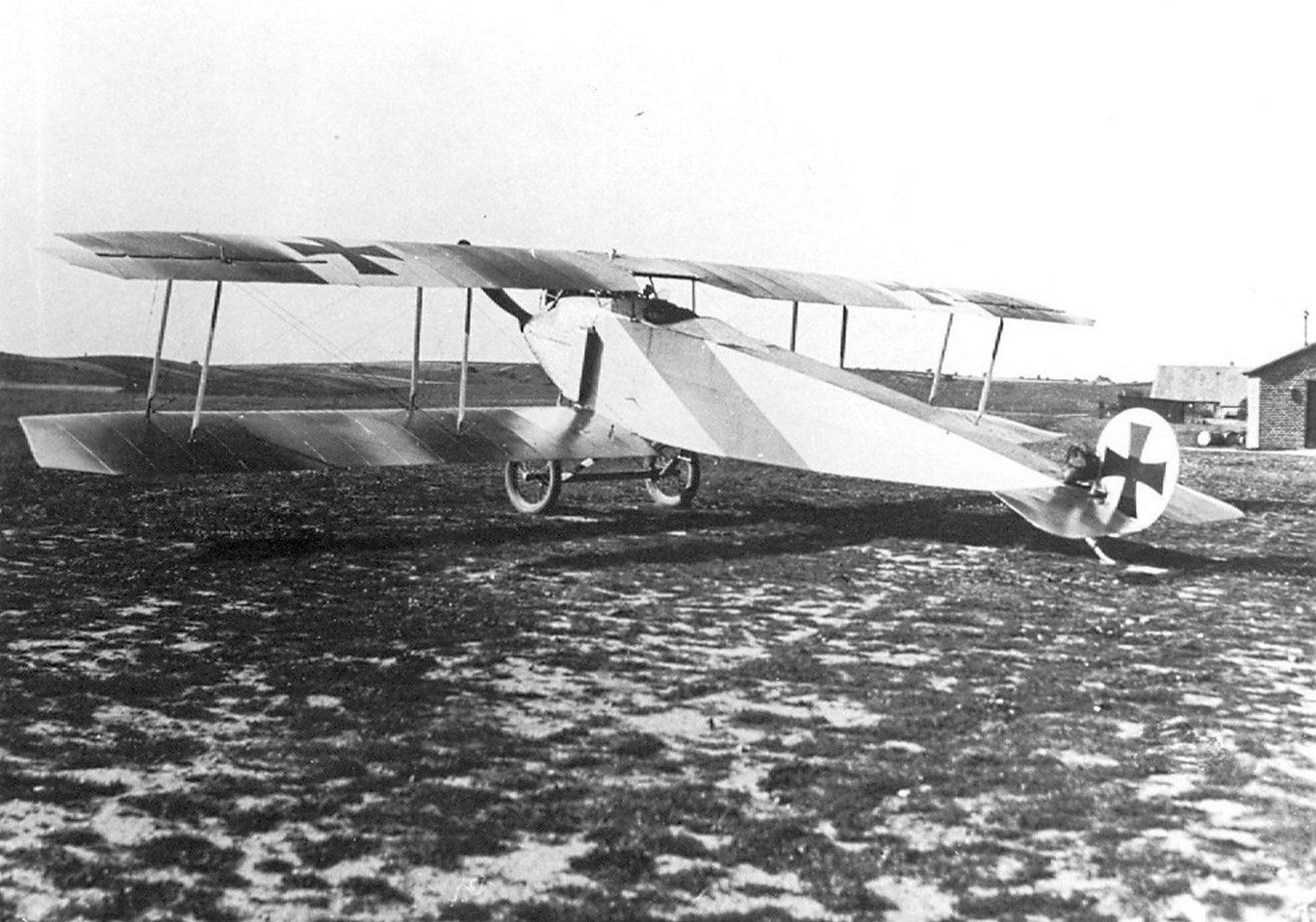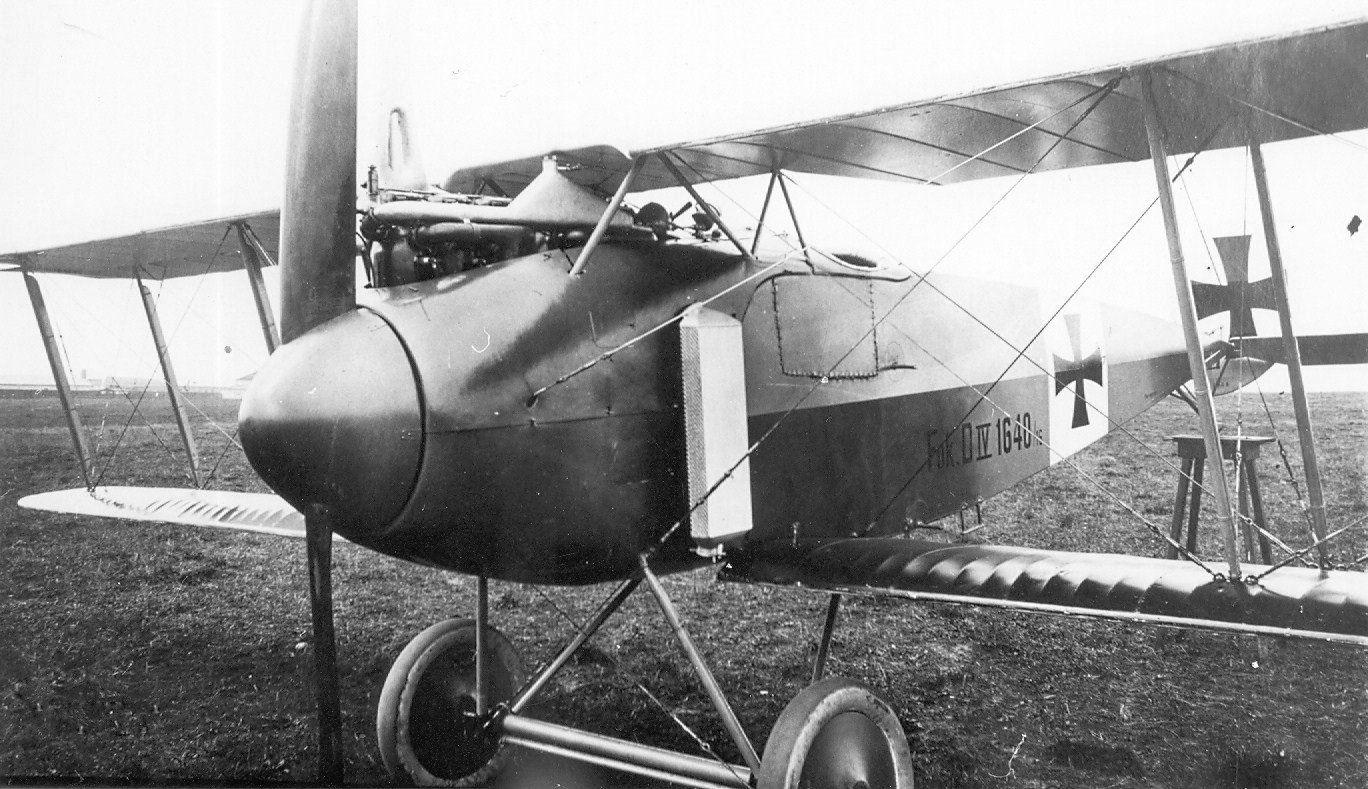The Fokker D.IV
The D.IV was equipped with the powerful 160 hp 6-cylinder Mercedes D III inline engine and achieved a top speed of 160 km/h.
The D.IV was designed by Martin Kreutzer. The aircraft was equipped with ailerons in the wing as standard. The front of the fuselage was more streamlined than its predecessors, this was possible due to the shape of the relatively narrow inline engine.
One aircraft even had a streamlined spinner around the propeller hub that followed the contour of the fuselage.
The position of the exhaust was also changed on this device.
The armament consisted of two 7.92 mm LMG/815 machine guns.
The D.IV was not a great success. During testing of the aircraft, manufacturing and design errors were found, including in the welded joints of the frame.
Errors and reduced quality were again the result of unskilled personnel in the Fokker factory.
The aircraft was never approved for frontline operations by the German army but was mainly used for training and defence inland, far from the front.
The German army had forty D.IVs in service, Sweden ordered four.
On January 24, 1917, the Swedish Army concluded an agreement with Fokker for the delivery of 4 D.IVs.
Only three D.IVs were built for Sweden, but these were never used but stored in a hangar in Stockholm.
They didn't even carry Swedish registrations.
Click on the photo to enlarge the photo





















